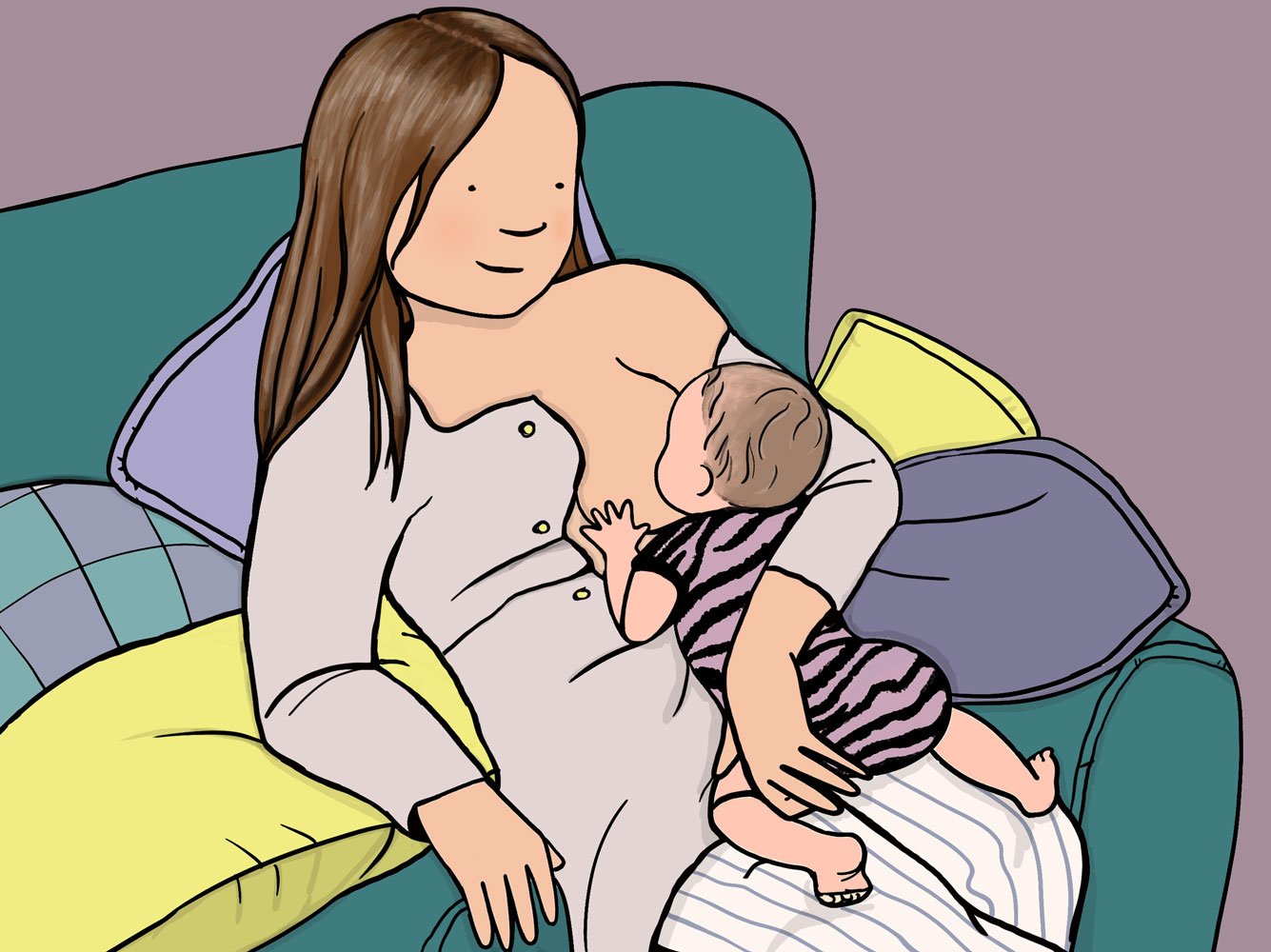Breastfeeding positions
There is no one position to use to breastfeed your baby. What works well for one breastfeeding mother and baby may not work for another. What worked with one of your baby’s may not work for another. In addition, you may find some positions work better for you at different stages of your breastfeeding journey and for different times of the day or night.
How to tell if breastfeeding your new baby is going well?
In the UK as many as 81% of mothers initiate breastfeeding, however by 6 weeks of life only 55% are still doing any breastfeeding at all. Something is amiss. As a lactation consultant is important for me to empower families in the antenatal period to understand how breastfeeding works, know the practicalities of breastfeeding new-borns and to know how to tell it is going well.
Breastfeeding with large breasts
It’s often assumed that women with larger breasts will produce more milk and that having large breasts is therefore an advantage when you’re breastfeeding. In fact, there’s no correlation between the size of a woman’s breasts and her milk production. Women with larger breasts have more fatty tissue, not more glandular tissue, and the latter is where milk is produced.
Help! My breastfed baby won’t take a bottle
Breast fed babies do not need to learn to bottle feed. However there may be circumstances where for personal reasons they may prefer their infant to take a bottle here and there. And this blog is for families who have made that choice but who are struggling to get their baby to accept a bottle.
Feeding with a tongue tie
What is a tongue tie?
A tongue tie, also known as ankylogossia is where the small strip of tissue known as the lingual frenulum, which connects the tongue to the floor of mouth, is too short, too tight or too close to the gum ridge.
When this occurs, it can impact on tongue movement, which in turn can impact on the feeding process.
There are two types of tongue tie, anterior and posterior
Getting a deep latch
A shallow latch is a common cause of pain during breastfeeding in the early days and weeks.
What is a shallow latch?
A shallow latch occurs when your baby doesn’t take a large enough mouthful of breast tissue into its mouth when latching. As a result your nipple
What I Wish I'd Known about Breastfeeding....
I wish I’d known…
to feed my baby as soon as possible after birth.
If you can, feed your baby within the first hour of its birth. After this the baby can become sleepy for up to 24 hours and less interested in breast feeding. Benefits of this first early feed include keeping baby warm by being skin to skin, calming the baby, giving baby colostrum as its very first milk and releasing oxytocin which makes your uterus contract and reduces your bleeding as well as making you feel very in love with your new tiny one.







